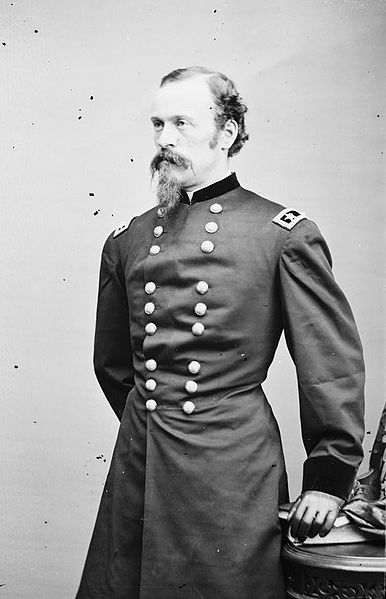James Harrison Wilson was a topographic engineer in the United States Army and a Major General in the Union Army during the American Civil War. He initially served as an aide to Major General George B. McClellan during the Maryland Campaign before joining Major General Ulysses S. Grant's army in the Western Theater, where he was promoted to brigadier general. In 1864, he transferred from engineering to the cavalry, where he displayed notable leadership in many engagements of the Overland Campaign. However, his attempt to destroy Lee’s supply lines failed when he was routed by a much smaller force of Confederate irregulars.
Portrait of James Wilson during the Civil War
Union Cavalry General James Harrison Wilson & staff
The Overland Campaign, also known as Grant's Overland Campaign and the Wilderness Campaign, was a series of battles fought in Virginia during May and June 1864, towards the end of the American Civil War. Lt. Gen. Ulysses S. Grant, general-in-chief of all Union armies, directed the actions of the Army of the Potomac, commanded by Maj. Gen. George G. Meade, and other forces against Confederate Gen. Robert E. Lee's Army of Northern Virginia. Although Grant suffered severe losses during the campaign, it was a strategic Union victory. It inflicted proportionately higher losses on Lee's army and maneuvered it into a siege at Richmond and Petersburg, Virginia, in just over eight weeks.
Ulysses S. Grant and Robert E. Lee, respectively, opposing commanders in the Overland Campaign
Union staff meeting at Massaponax Baptist Church on May 21, 1864. Grant has his back to the smaller tree with Charles Anderson Dana to his left, while Meade is seated at the far left.
Movement to Totopotomoy, May 25–28, 1864, following the Battle of North Anna
Battle of Totopotomoy Creek, May 30, 1864






